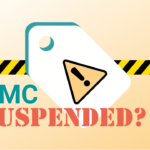
How to build a great online store

It’s now easier than ever to create an online store, and the e-commerce space gets more vibrant and dynamic each day. It’s incredible how quickly one can start selling to a local or global audience, no matter the product or business model. However, there are certain elements that make some online stores more successful than others. We’re going to discuss key elements to consider for your e-commerce store so that you can gain positive interactions from your customers. Hopefully, this will help you prevent your buyers from simply clicking away from your store at first glance.
Your Homepage
This is a great place to start as your homepage is the first place where your customers get a sense of your business identity. Your homepage should be clear and easy to understand, with clear visual elements and text. Your customers should easily be able to tell which products/services you can offer them.
Remember that you can create specific pages later to share more detail with your customers – such as ‘About’ and ‘FAQ’ pages. It’s also wise to craft a homepage that easily links to other sections of your website, such as your store, contact page, about page and so on. It’s a smart idea to simplify your messaging, as you’ll want to grab your customers’ attention quickly, without displaying too much information for them to absorb. Focus on presenting a clear brand identity to your customers.
Your homepage should act as a springboard to other information, including contact details, customer support and external social media profiles. You can also use the homepage to display the latest items or sales that you’re offering to your customers.
Similarly, your About page should feature an engaging and easy-to-read history of your company, it’s values and its unique selling points.
Functionality
It goes without saying that your e-commerce store needs to be equipped to handle sales! Sometimes a website might have an eye-catching design, but barely functions when it comes to the actual checkout process. The key to this is crafting a great user interface. This should cover shopping carts, account management/login and search features, as well as appropriate payment portals for your buyers. It’s impossible to envision an online store without these key functions. Once you’ve got the basics down, you can also build in new features for customer convenience, including wishlisting, re-ordering previous products and repeat orders. It’s vital that the checkout process is simple for customers to follow through, as any delays here might cause a customer to cancel their order.
Some essential operational features to include are:
- An easy way to create new user profiles and log in
- Easy store navigation between items and categories
- A large ‘checkout’ button and options to review cart after adding items
- Clearly including all costs in checkout, including shipping or collection
- Fast page loading times – best kept to under 4 seconds
- Easy ways to remove or add items to cart for the buyer
- Product images in cart for every item
- Clear shipping expectations communicated during purchase
- Accessible links to support should there be any technical issues
- Receipts/invoices, should there be any need for return/exchange
- Support for different operating systems and web browsers
- Mobile functionality
- Look out for any broken links that could be disruptive
You might also want to advertise all of the payment portals that are accepted on your e-commerce store to highlight a few different options for your buyers.
Product Pages
When looking at the layout of your store, it might be wise to create different product categories – this will allow your buyers to search your catalogs more easily. Think of these as departments of a grocery store – often, you’ll walk towards specific aisles to find what you need. This is no different with e-commerce shopping, and you’ll want to have a simple and clear layout for your categories for easy browsing.
Within your categories, you should put some time into crafting amazing product pages. The product page needs to convince the customer to complete the purchase – so it needs to portray your items in the best way possible. It’s absolutely essential to include relevant information through high quality copy, so that the potential buyer can see an overview as quickly as possible and in an accessible way. Focus on writing about the benefits of the product and it’s technical specifications while using short sentences and a conversational tone to motivate purchases. Remember to include anything that differentiates your product or helps it stand out from the competition!
High-quality imagery on your website is non-negotiable; make sure your product images make use of good lighting and are in sharp focus. Strong imagery gives your customer a chance to visualize your product in context, as well as highlight specific features of your product. There’s no reason to not include an image with today’s powerful smartphones!
It is also wise to add a sorting feature, where customers can opt for a specific filter. Bestsellers, price filtering, customer ratings and new items are just some of the filters you can add, as long as you keep in mind that your filters should be helpful. It goes without saying that the price of your item should be very clearly indicated.
Product pages also present a great opportunity for upselling in the form of recommendations on related products. This is a subtle way to push customers to adding items to their cart that might be complementary. For instance, it would be smart to recommend an extra hard-drive for a camera buyer, as they’re likely to have lots of large files. This is a great way to highlight items that aren’t obvious choices – but don’t overload customers with too many recommendations, as they’ll become annoyed with too many distractions.
Promotions
Shopping deals are a great way to attract new visitors to your website – for example, free shipping could increase your revenue as most people are on the lookout for discounts during their shopping experience.
Sometimes, a promotion or deal might be the first thing a customer looks for, as they may have a limited budget. It makes sense to highlight any deals or promotions you may be offering on your homepage to entice your customers to purchase from your e-commerce store. You can also communicate this in different marketing strategies, including email campaigns and social media content. However, make sure your website accurately reflects any discounts that are on offer, especially if these are constantly changing.
You might wish to set limits for your promotions to inhibit increased costs, such as free shipping for a minimum spend amount, or seasonal/rotating deals.
Product Reviews
Have you ever wanted your existing customer to create a sale for you? Welcome to the product review, where customers can express their overall satisfaction with your e-commerce store and products. This is a great way to validate the quality of your products, as well as entice new customers who might be on the fence.
It’s known that 53% of customers prefer to purchase after looking at item reviews, while customer reviews are up to 12 times more likely to be trusted by their peers compared to a company description. These are significant figures, which indicate that reviews have become a necessity in staying up to date with e-commerce buying habits.
Mobile Shopping Optimisation
In 2018, 79% of people used mobile devices for e-commerce purchased above laptops or PCs. It is absolutely essential that your e-commerce website is optimised for mobile users at every step of the customer journey. If you fail to do this, you’re missing out on a lot of potential revenue.
Things to look at to optimise your mobile site include:
- Functioning checkout on mobile devices
- Easy website navigation on mobile devices
- Design includes enough space for fingers to tap on them easily, especially on checkout and ‘next’ pages
- Mobile website reflects high-quality images and simple text
- Support for different browsers
Returns Policy
It’s important that your customers can easily contact you if they need to lodge a return or exchange. One way to avoid potential returns is to make sure your product images, specs and descriptions are clear and comprehensible. When drafting a returns policy, make sure it is written in clear terms with no difficult jargon, is easy to find on your website and does not include hidden costs for the customer. The medium of exchange must also be clear e.g. can your customer choose credit, cash, or an exchange?
Tied into this, your customer service should also be exceptional. Sometimes products break, or there is an unexpected delivery problem. You’ll need to be prepared to deal with unhappy customers, regardless of what caused their problem.
Bad customer service is easily spread on social media platforms, so you’ll want to put measures in place to avoid a negative review going viral. One way to easily communicate to your customer includes a detailed FAQ page and personalised communications throughout your interactions.
Conclusion
It’s super easy to launch an e-commerce site at present, but that doesn’t mean that your store will be an instant success – especially if it’s lacking essential features that make it easier for your customers to interact with your store. Some key features to include on your e-commerce website include easy navigation and a clear homepage, functional checkout and payments, a well-written returns policy, mobile shopping optimisation, customer support, product reviews, promotions and deals, concise product categories, detailed descriptions and high-quality imagery and text.
Need help getting your e-commerce products listed on digital marketing channels? Look no further than ShoppingFeeder, an all-in-solution for e-commerce marketing, analytics and product feed management.





